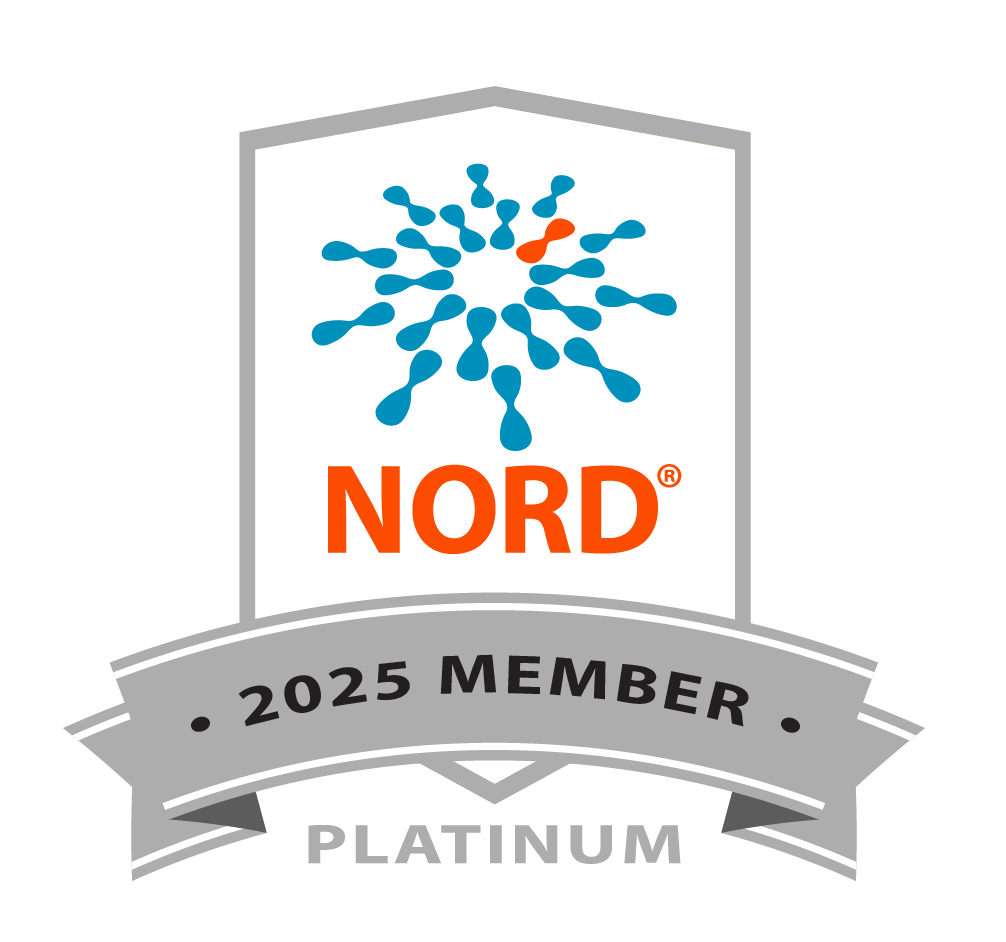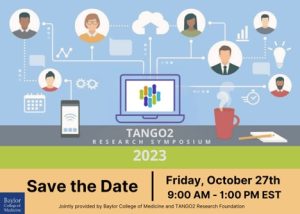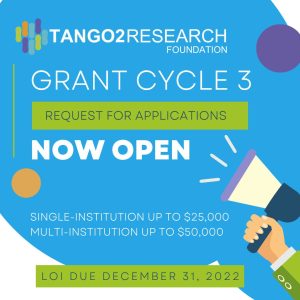2025
- Lujan, A. L., Foresti, O., Wojnacki, J., Bigliani, G., Brouwers, N., Pena, M. J., Androulaki, S., Hashidate-Yoshida, T., Kalyukina, M., Novoselov, S. S., Shindou, H., & Malhotra, V. (2025). TANGO2 is an acyl-CoA binding protein. Journal of Cell Biology.
2024
- TANGO2 Research Foundation Poster Abstracts 2024 – TANGO2 Family Conference – Disney’s Coronado Springs Resort – June 23 – 25, 2024. Therapeutic Advances in Rare Disease. 2024;5.
- Gaillard, J. R., Whitt, Z., Selwa, L. M., Harris, D., & Lee, K. N. (2024). Pearls & Oy-sters: Whole-Genome Sequencing in Critically Ill Neurologic Patient Leads to Diagnosis With Treatment Implications. American Academy of Neurology.
- Niu, M. C., Etheridge, S. P., Tristani-Firouzi, M., Miyake, C. Y. (2024). Pediatric and Familial Genetic Arrhythmia Syndromes-Evaluation of Prolonged QTc-Differential Diagnosis and what You Need to Know. Cardiac Electrophysiology Clinics, 16(2), 195-202.
-
Xu, W., Cao, Y., Stephens, S. B., Arredondo, M. J., Chen, Y., et al. (2024). Folate as a potential treatment for lethal ventricular arrhythmias in TANGO2-deficiency disorder. JCI Insight.
- Calbiac, H. de, Montealegre, S., Straube, M., Renault, S., Debruge, H., Chentout, L., Ciura, S., et al. (2024). TANGO2-Related Rhabdomyolysis Symptoms Are Associated with Abnormal Autophagy Functioning. Autophagy Reports.
- Walters, B., McConkey, N., & Imundo, J. R. (2024). TANGO2: A Rare but Important Mutation. The Journal of Innovations in Cardiac Rhythm Management.
- Sacher M, DeLoriea J, Mehranfar M, Casey C, Naaz A, Gamberi C. (2024). TANGO2 deficiency disease is predominantly caused by a lipid imbalance. Dis Model Mech.
- Arredondo Sancristobal, M. J., Chen, Y., Hoyt, W. J., Beach, C., Meisner, J. K., de la Uz, C. M., et al. (2024). Nutritional vitamin supplementation is an alternative antiarrhythmic approach to prevent and treat lethal TANGO2 deficiency disorder related ventricular arrhythmias during inpatient admission. Heart Rhythm.
- Miyake, C. Y., Mackenzie, S. J., & Zhang, L., (2024). Top Stories on arrhythmias in TANGO2 deficiency disorder. Heart Rhythm.
- Mehranfar, M., Asadi, P., Shokohi, R., Milev, M. P., Gamberi, C., & Sacher, M., (2024). Lipidomic analysis of human TANGO2-deficient cells suggests a lipid imbalance as a cause of TANGO2 deficiency disease. Biochemical and Biophysical Research Communications
- Li, H., Xu, Z., Guo, J., Zhang, P., Dong, X., & Zhao, L. (2024). Vitamin B5 monotherapy improves symptoms in a 7-year-old girl with TANGO2 deficiency disorder. American Journal of Medical Genetics Part A.
2023
- Sandkuhler, S. E., Zhang, L., Meisner, J. K., Ghaloul-Gonzalez, L., Beach, C. M., Harris, D., de Lonlay, P., Lalani, S. R., Miyake, C. Y., & Mackenzie, S. J. (2023). B-complex vitamins for patients with TANGO2-deficiency disorder. Journal of Inherited Metabolic Disease.
- Owlett, L. D., Zapanta, B., Sandkuhler, S. E., Ames, E. G., Hickey, S. E., Mackenzie, S. J., & Meisner, J. K. (2023). Multicenter appraisal of comorbid TANGO2 deficiency disorder in patients with 22q11.2 deletion syndrome. American Journal of Medical Genetics Part A.
- DeLoriea, J., Millet-Boureima, C., Gamberi, C. (2023). Protocol to build a drug-testing pipeline using large populations of Drosophila melanogaster. STAR Protocols.
- Kim, E. S., Casey, J. G., Tao, B. S., Mansur, A., Mathiyalagan, N., et al. (2023). Intrinsic and extrinsic regulation of rhabdomyolysis susceptibility by Tango2. Disease Models & Mechanisms.
- Miyake, C. Y., Ehsan, S., Zhang, L., Mackenzie, S., Azamian, M., et al. (2023). Early initiation of B‐vitamin supplementation may reduce symptoms and explain intrafamilial variability: Insights from two sibling pairs from the TANGO2 natural history study. American Journal of Medical Genetics.
- Yılmaz-Gümüş, E., Elcioglu, N. H., Genç, E., Arıcı, Ş., Öztürk, G., et al. (2023). Management of acute metabolic crisis in TANGO2 deficiency: A case report. Journal of Pediatric Endocrinology and Metabolism.
- Lujan, A. L., Foresti, O., Sugden, C., Brouwers, N., Farre, A. M., et al. (2023). Defects in lipid homeostasis reflect the function of TANGO2 in phospholipid and neutral lipid metabolism. eLife.
- Miyake, C. Y., Lay, E. J., Soler-Alfonso, C., Glinton, K. E., Houck, K., et al. (2023). Natural history of TANGO2 deficiency disorder- Baseline assessment of 73 patients. Genetics in Medicine, 25(4).
- Lalani, S. R., Graham, B., Burrage, L., Lai, Y., Scaglia, F., et al. (Updated 2023, March 9). TANGO2-related metabolic encephalopathy and arrhythmias. GeneReviews® [Internet].
- Gomes, S., Laranjo, S., Trigo, C., & Pinto, F. F. (2023). The TANGO2 disease and the therapeutic challenge of acute arrhythmia management: A case report. European Heart Journal – Case Reports, 7(2).
2022
- Sandkuhler, S. E., Zhang, L., Meisner, J. K., Ghaloul-Gonzalez, L., Beach, C. M., et al. (2022). B-complex vitamins for patients with TANGO2-deficiency disorder. Journal of Inherited Metabolic Disease.
- Casey, J. G., Kim, E. S., Tao, B. S., Mansur, A., Wallace, E. D., et al. (2022, November 12). Glycerolipid defects in skeletal muscle contribute to rhabdomyolysis in Tango2 deficiency. bioRxiv.
- Lujan, A., Foresti, O., Brouwers, N., Farre, A. M., Vignoli, A., et al. (2022, November 5). Defects in lipid homeostasis reflect the function of TANGO2 in acyl-coA metabolism. bioRxiv.
- Asadi, P., Milev, M. P., Saint-Dic, D., Gamberi, C., & Sacher, M. (2022, November 4).Vitamin B5, a coenzyme A precursor, rescues TANGO2 deficiency disease-associated defects in Drosophila and human cells. Journal of Inherited Metabolic Disease, 46(2), 358-368.
- Yokoi, K., Nakajima, Y., Takahashi, Y., Hamajima, T., Tajima, G., et al. (2022). Transport and golgi organization 2 deficiency with a prominent elevation of C14 during a metabolic crisis: A case report. JIMD Reports, 1–7.
- Miyake, C. Y., Lay, E. J., Beach, C., Ceresnak, S. R., Delauz, C. M., et al. (2022). Cardiac crises: Cardiac arrhythmias and cardiomyopathy during TANGO2 deficiency related metabolic crises. Heart Rhythm, 19(10), 1673–1681.
- Zhang, L., Xu, W., Cao, Y., Yu, A., Kim, J., et al. (2022, June 22). Folate ameliorates arrhythmia in patient-derived TANGO2-deficient iPSC-cardiomyocytes. Research Square.
- Murali, C. N., Lalani, S. R., Azamian, M. S., Miyake, C. Y., & Smith, H. S. (2022). Quality of life, illness perceptions, and parental lived experiences in TANGO2-related metabolic encephalopathy and arrhythmias. European Journal of Human Genetics, 30(9), 1044–1050.
- Heiman, P., Mohsen, A. W., Karunanidhi, A., St Croix, C., Watkins, S., et al. (2022). Mitochondrial dysfunction associated with TANGO2 deficiency. Scientific Reports, 12(1).
2021
- TANGO2-related metabolic encephalopathy and arrhythmias. (2021, November 8). Genetic and Rare Diseases Information Center.
- Powell, A. R., Ames, E. G., Knierbein, E. N., Hannibal, M. C., & Mackenzie, S. J. (2021). Symptom prevalence and genotype-phenotype correlations in patients with TANGO2-related metabolic encephalopathy and arrhythmias (TRMEA). Pediatric Neurology, 119, 34–39.
- Schymick, J., Leahy, P., Cowan, T., Ruzhnikov, M. R. Z., Gates, R., Fernandez, L., et al. (2021). Variable clinical severity in TANGO2 deficiency: Case series and literature review. American Journal of Medical Genetics Part A, 188A(2), 473–487.
2020
- It takes two to TANGO2. (2020, December 4). Journal of Inherited Metabolic Disease.
- Bérat, C., Montealegre, S., Wiedemann, A., Nuzum, M. L. C., Blondel, A., et al. (2020). Clinical and biological characterization of 20 patients with TANGO2 deficiency indicates novel triggers of metabolic crises and no primary energetic defect. Journal of Inherited Metabolic Disease, 44(2), 415–425.
- Milev, M. P., Saint-Dic, D., Zardoui, K., Klopstock, T., Law, C., et al. (2020). The phenotype associated with variants in TANGO2 may be explained by a dual role of the protein in ER-to-Golgi transport and at the mitochondria. Journal of Inherited Metabolic Disease, 44(2), 426–437.
- Mingirulli, N., Pyle, A., Hathazi, D., Alston, C. L., Kohlschmidt, N., et al. (2020). Clinical presentation and proteomic signature of patients with TANGO2 mutations. Journal of Inherited Metabolic Disease, 43(2), 297–308.
2019
- Jennions, E., Hedberg-Oldfors, C., Berglund, A., Kollberg, G., Törnhage, C., et al. (2019). TANGO2 deficiency as a cause of neurodevelopmental delay with indirect effects on mitochondrial energy metabolism. Journal of Inherited Metabolic Disease, 42(5), 898–908.
- Dines, J. N., Golden-Grant, K., LaCroix, A., Muir, A. M., Cintrón, D. L., et al. (2019). TANGO2: Expanding the clinical phenotype and spectrum of pathogenic variants. Genetics in Medicine, 21(3), 601–607.
2018
- Lalani, S. R., Graham, B., Burrage, L., Lai, Y., Scaglia, F., et al. (2018, December 20). TANGO2-related metabolic encephalopathy and arrhythmias. GeneReviews® [Internet].
2016
- Lalani, S., Liu, P., Rosenfeld, J., Watkin, L., Chiang, T., et al. (2016). Recurrent muscle weakness with rhabdomyolysis, metabolic crises, and cardiac arrhythmia due to bi-allelic TANGO2 mutations. The American Journal of Human Genetics, 98(2), 347–357.
- Kremer, L., Distelmaier, F., Alhaddad, B., Hempel, M., Iuso, A., et al. (2016). Bi-allelic truncating mutations in TANGO2 cause infancy-onset recurrent metabolic crises with encephalocardiomyopathy. The American Journal of Human Genetics, 98(2), 358–362.
2008
- Maynard, T. M., D. W. Meechan, M. L. Dudevoir, et al. 2008. “Mitochondrial Localization and Function of a Subset of 22q11 Deletion Syndrome Candidate Genes.” Molecular and Cellular Neurosciences 39:439–451.

Tips For Reading Scientific Papers
Reading a scientific paper is a different process than reading about science in a blog or news article. At first, a single paper may take considerable time to get through, so be patient with yourself. You might find it helpful to read sections out of order, take notes, reread multiple times, skim or skip certain parts, and pause to look up terms in our glossary. As you gain experience, you’ll develop a reading approach that works best for you.
Most research papers will be divided into the following sections:
Abstract: Briefly summarizes the research including why it is important, what was done, and what was found.
Introduction: contains all the background information needed to understand the broader context of the research.
Methods: clearly outlines how the research was carried out.
Results: describes what was found in detail, sometimes using tables and figures (graphs, illustrations, or diagrams).
Discussion: makes connections to other research and interprets the meaning of the results.
Conclusion: reinforces major takeaways and states their significance beyond the paper.
Not all papers are freely accessible; for some, you may only be able to view the abstract. If you want to read the full text of a restricted paper, Open Access Button is a tool that can direct you to a free copy or help you request it from the author. Alternatively, you can email the author directly, as many are open to sharing their work upon request.










